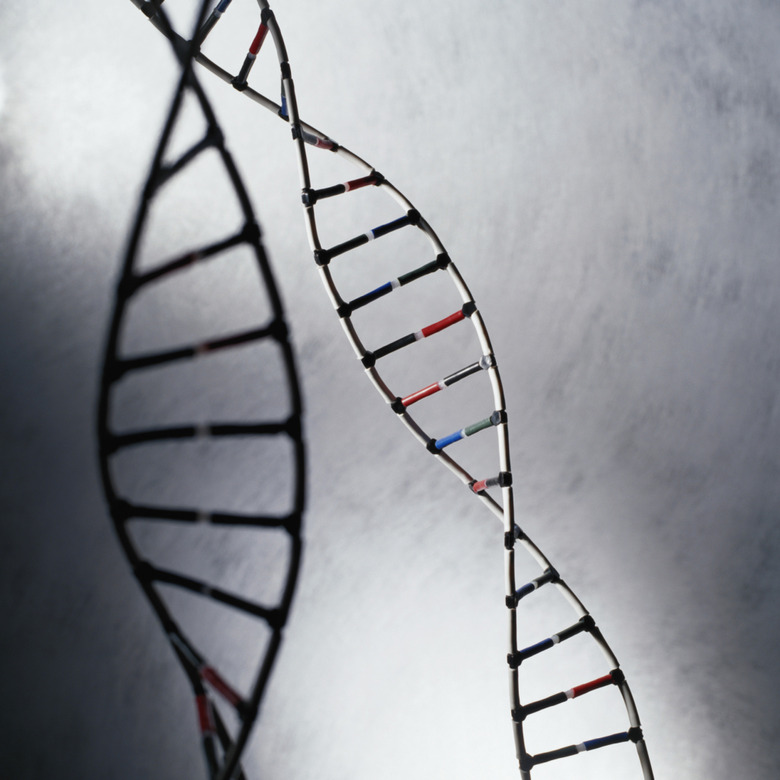Why Does DNA Content Increase During Interphase?
Mitosis is the fundamental process by which most life forms grow and reproduce. Commonly referred to as cell division, mitosis occurs when one cell divides into two cells that have the same number of chromosomes as the parent cell. Mitosis is the primary form of reproduction for unicellular organisms, and it is the means of growth and regeneration for multicellular organisms. DNA, which must be passed to the resulting cell, is replicated during a preparatory period known as interphase.
The Blueprint of Life
The Blueprint of Life
Deoxyribonucleic acid, commonly known as DNA, is a long molecule composed of small sections known as nucleotides. The different combinations of nucleotides in DNA form a genetic code that governs all the actions performed by a cell and thus influences every aspect of an organism's life. DNA is like an instruction set that teaches each cell how to act so that it contributes to the overall well-being of an organism. Consequently, each new cell that is created through mitosis needs to receive an exact copy of this DNA.
From Birth to Reproduction
From Birth to Reproduction
Interphase includes the majority of a cell's life, from its generation following mitosis to the final preparations for its own reproductive process. For most cells, interphase is divided up into three sub-phases: G1, S and G2. The G1 phase is the long period in which a cell matures following mitosis and performs the ordinary functions associated with its particular role as an individual member of an ecosystem or as a component of a higher organism. Eventually, the cell must turn its attention to reproduction. This is when it enters the S phase.
Double the DNA
Double the DNA
The S-phase portion of interphase is when the DNA content of a cell increases. Ordinarily, a cell has one set of chromosomes, which are threadlike structures that contain the cell's DNA. During the G1 phase, each chromosome contains one molecule of DNA. But when the reproductive process begins, the cell will need two sets of DNA: one for itself and one for the offspring cell. During the S phase, the cell replicates its genetic material so that each chromosome will contain two molecules of DNA. Thus, upon completion of the S phase, the cell has the same number of chromosomes, but its DNA content has doubled.
Two Cells in One
Two Cells in One
The S phase is followed by the G2 phase. This period resembles the G1 phase in that the cell resumes its ordinary functions, but it differs from the G1 phase in that it terminates with the final preparations for mitosis rather than DNA replication. Cell division produces a cell that is almost identical to the original cell, so the new cell will need all of the specialized structures, known as organelles, possessed by its parent cell. During the G2 phase, the cell duplicates its organelles so that one set will be available for the offspring cell.
References
Cite This Article
MLA
West, Joseph. "Why Does DNA Content Increase During Interphase?" sciencing.com, https://www.sciencing.com/dna-content-increase-during-interphase-8303/. 24 April 2017.
APA
West, Joseph. (2017, April 24). Why Does DNA Content Increase During Interphase?. sciencing.com. Retrieved from https://www.sciencing.com/dna-content-increase-during-interphase-8303/
Chicago
West, Joseph. Why Does DNA Content Increase During Interphase? last modified March 24, 2022. https://www.sciencing.com/dna-content-increase-during-interphase-8303/
